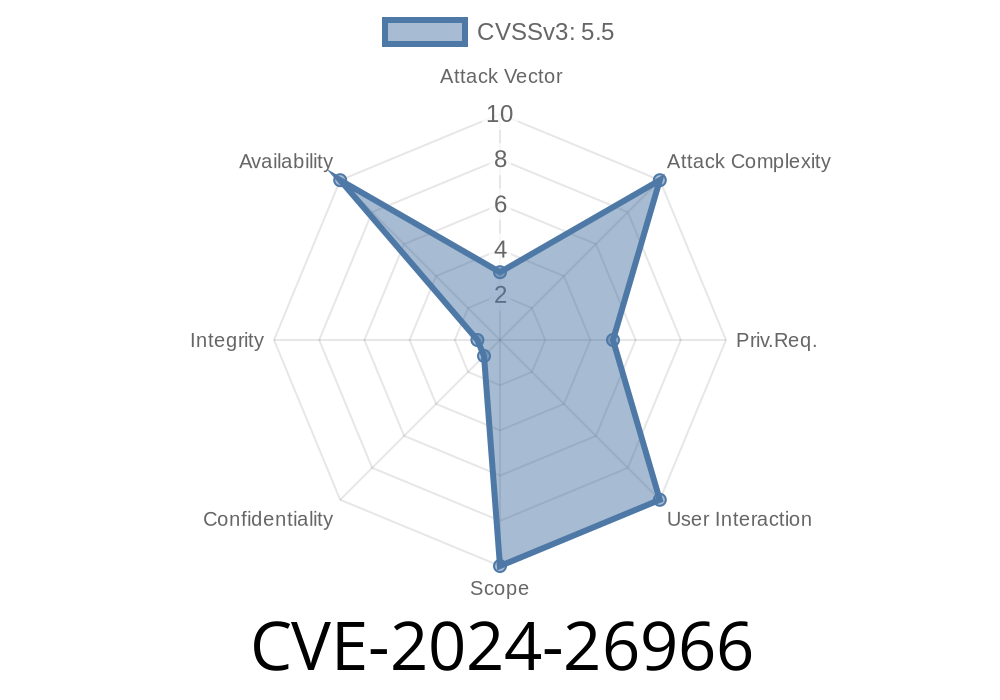A vulnerability was recently disclosed in the Linux kernel, specifically targeting the Qualcomm MSM Multimedia Clock Controller (MMCC) driver for the APQ8084 platform. This issue, tracked as CVE-2024-26966, can potentially lead to a heap out-of-bounds read and other unpredictable behavior. In this post, we'll break down what the bug is, how it can be triggered, the technical fix, and how it might be exploited.
Technical Background
The affected driver is responsible for managing the frequencies of hardware clocks in Qualcomm’s APQ8084 chip, commonly used in smartphones and embedded devices. The clock driver contains frequency table arrays – these are just lists of possible clock frequencies and their related settings.
In the Linux kernel, each frequency table must be ended with a "terminating" entry that signals the end of the list, typically a struct with all zeroed fields. If this terminator is missing, functions that walk the table (like qcom_find_freq() or qcom_find_freq_floor()) can accidentally read past the valid memory, causing bugs and risking an out-of-bounds access.
What is the bug?
In the APQ8084 MMCC driver, some frequency table arrays weren't properly terminated with an empty entry. When other functions loop through these arrays, the lack of a terminating element means those functions can start reading invalid memory (heap out-of-bounds read). In kernel-mode code, this can cause system instability, crashes, or even open the door for more serious exploits if attackers can control what's in the memory being wrongly read.
Who is affected?
- Devices running the affected Linux kernel versions with Qualcomm APQ8084 SoCs (commonly some Android devices, IoT hardware, etc).
- The bug is only present if those frequency tables are ever traversed — in practical terms, if those particular clocks or features are used.
Official Patch
The fix is very simple: append an all-zero entry to each frequency table. This acts as the expected end-of-list marker.
Patch reference:
- Linux media tree commit: clk: qcom: mmcc-apq8084: fix terminating of frequency table arrays
- LKML discussion
Before
static struct freq tbl_some_clk[] = {
{ .freq = 200000000, .val = xA },
{ .freq = 400000000, .val = xB },
// ...no terminating element!
};
After
static struct freq tbl_some_clk[] = {
{ .freq = 200000000, .val = xA },
{ .freq = 400000000, .val = xB },
{ } // Empty init: this is the terminator
};
Here's a simplified snippet of how these tables get read
int idx = ;
while (tbl[idx].freq != ) {
// use tbl[idx]
idx++;
}
If the .freq member never becomes (no terminator), the loop never stops correctly, leading to out-of-bounds access.
Exploit Details
While this bug is primarily a read overrun (not a write), attackers could potentially leverage it to:
Crash the kernel by causing it to access invalid memory
- Infer random kernel heap data contents (information leak), which can help in bypassing other security mechanisms if chained with other exploits.
On some systems, a malicious user or program with kernel module loading privileges could potentially trigger this bug by forcing use of the affected clock frequencies.
Here’s a hypothetical scenario using public sysfs interfaces and kernel modules
# Hypothetical: echo a bad freq into a clock node that triggers the table walk
echo 123456789 > /sys/kernel/debug/clock/some_qcom_clk/set_rate
# Kernel attempts to find this, overruns freq table => crash or info leak
It’s notable that the patch is only compile tested at this time, highlighting the importance of extreme care when handling hardware driver code.
Security Recommendations
- Update your kernel: If you use devices with the APQ8084, make sure you’re running kernel builds with this patch applied.
- Monitor sysfs/debug access: Restrict user-level access to sensitive clock controls.
References
- CVE-2024-26966 entry at NVD
- Upstream Linux Patch
- LKML Patch Discussion
- Qualcomm MMCC Linux Driver
Conclusion
CVE-2024-26966 is a small but important reminder: even simple things like missing array terminators can be a security risk, especially in kernel or low-level code. Always terminate your data structures correctly–and keep your devices updated!
If you found this helpful, consider sharing with colleagues working on Linux kernels or embedded devices. Safe hacking!
Timeline
Published on: 05/01/2024 06:15:12 UTC
Last modified on: 12/23/2024 13:50:21 UTC
